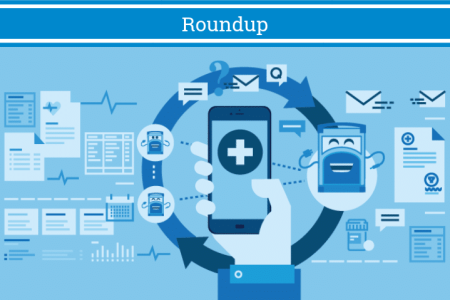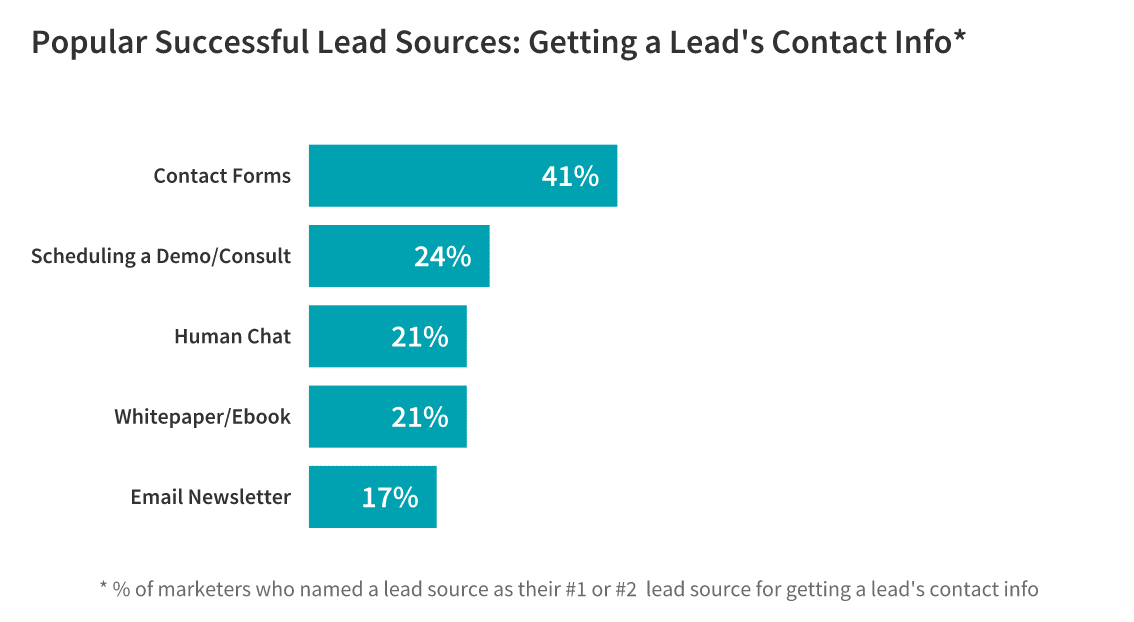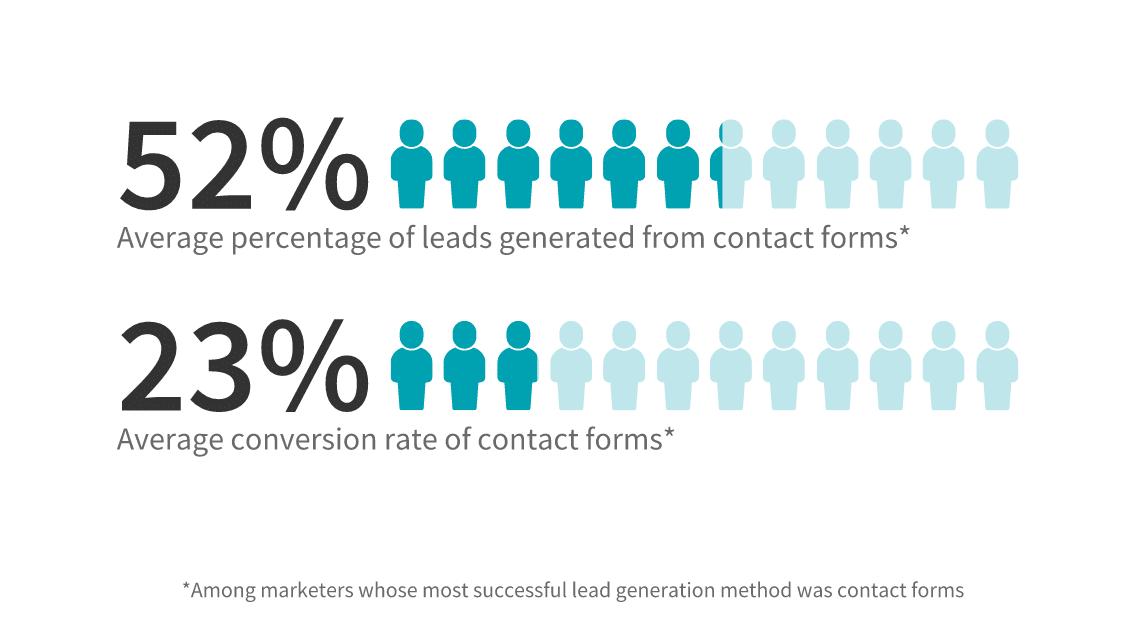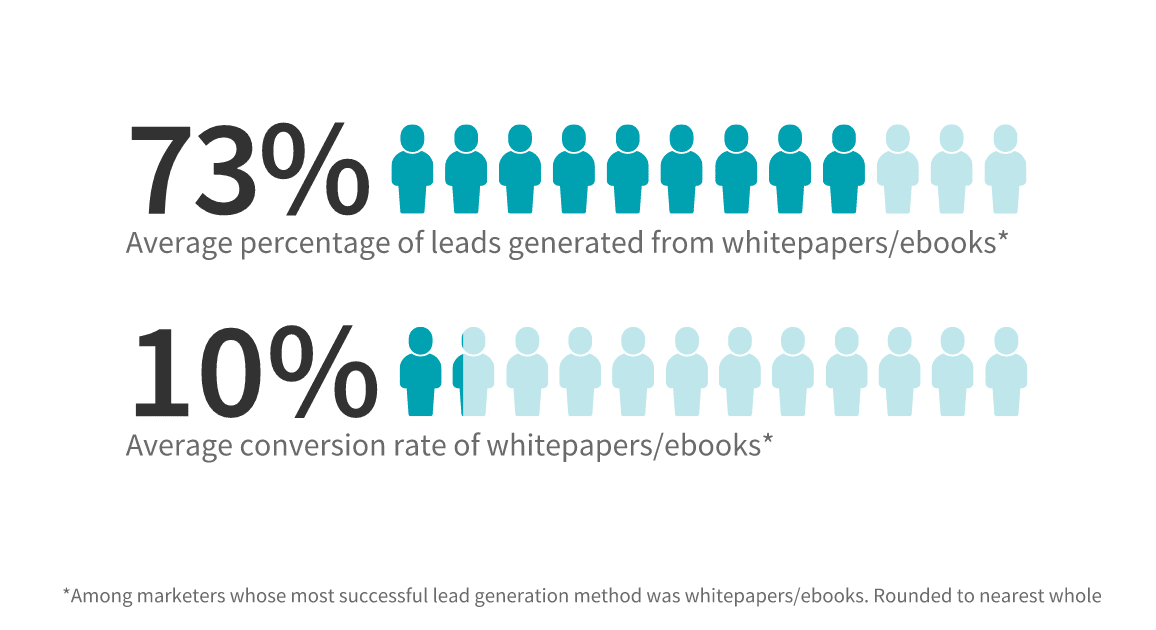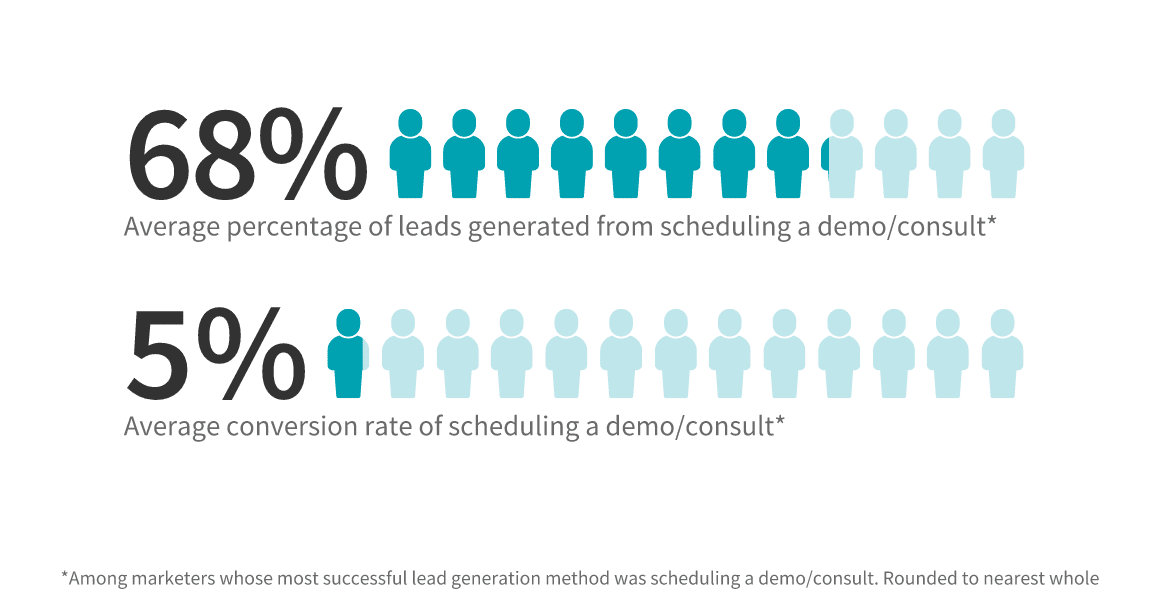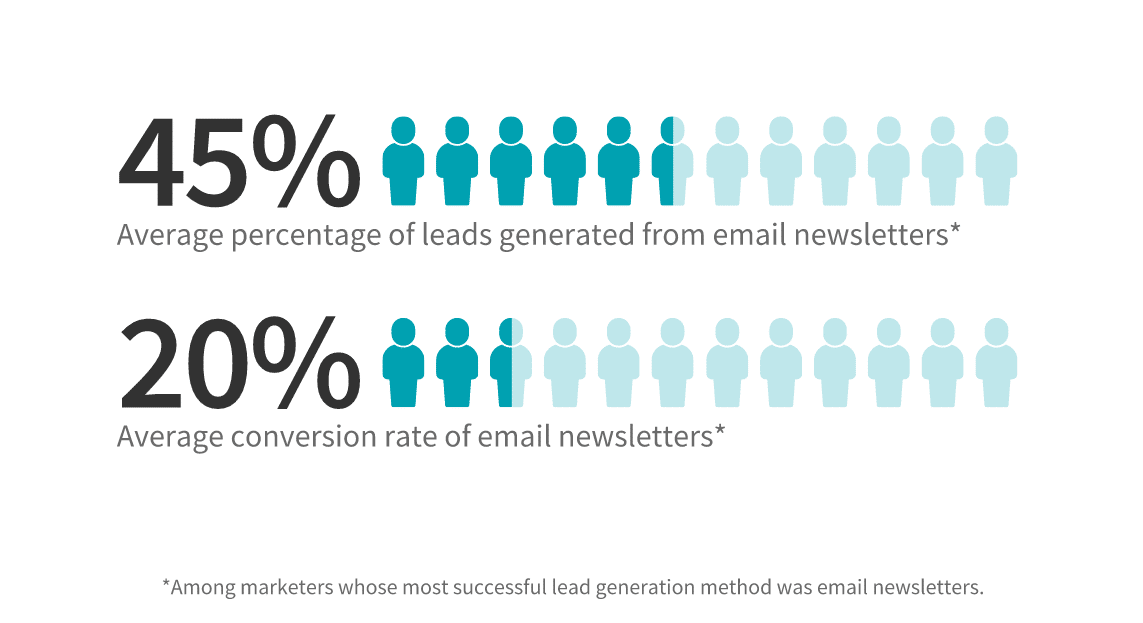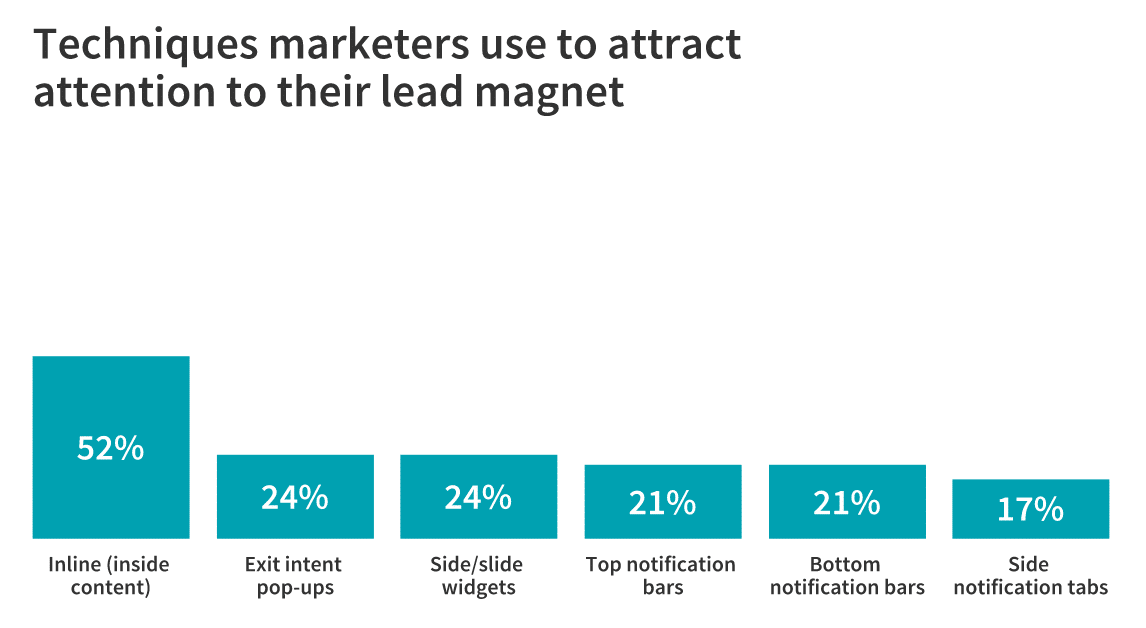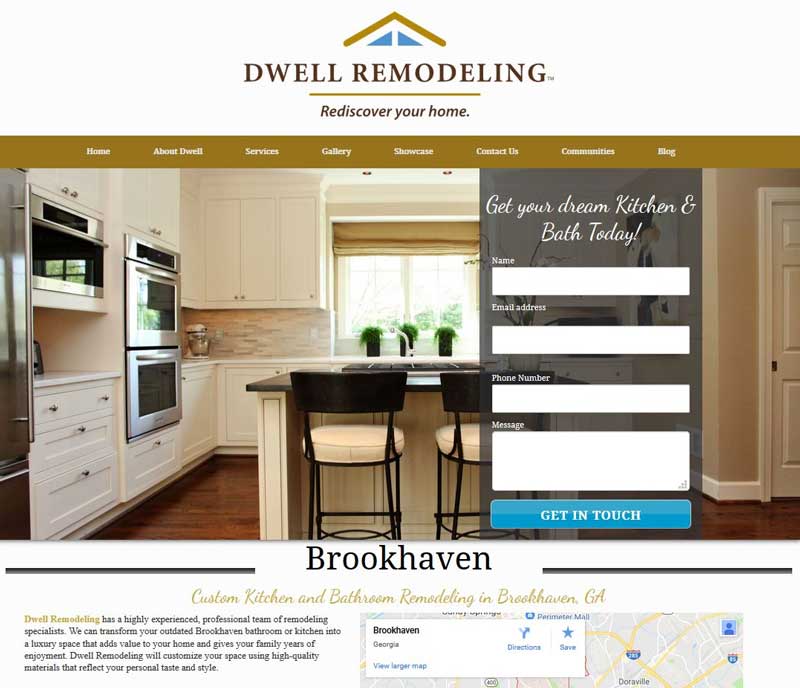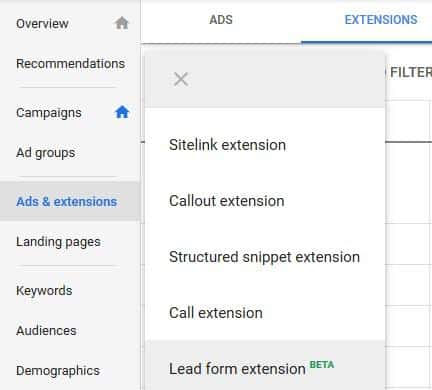Who doesn’t love learning about the best ways to capture leads? We’ve been writing and researching lead generation tips a lot recently, so much so that we decided to get some outside input. A lead is different from a prospect and is simply someone who has an interest in your product.
Because of this, we decided to survey others on what they have found to be the best way to capture leads. We know getting them is one battle, but capturing their information is another. We wanted to know what point or points others have found to be the best in capturing leads and converting them into sales.
We ran a survey to learn marketers’ best tips for converting leads into sales, and 29 respondents shared their thoughts. We asked the marketers 7 short-answer questions and 1 open-ended long form prompt.
Let’s examine the insightful statistics and compelling tips that we gathered in the survey.
[ez-toc]Contact forms are one of the best ways to capture leads
Marketers named a wide variety of lead sources as their most successful and second-most successful ways of getting a lead’s contact info. There were many sources that were named by only 1 or 2 marketers. Because of this, we decided to focus on the sources that marketers named most often.
Contact forms were the most popular successful lead source for gathering contact information (named as most successful or second-most successful by 41% of marketers), followed by scheduling a demo/consult (named by 24%).
Human chat (21%), whitepaper/ebook (21%), and email newsletter (17%) rounded out the top 5 most popular sources. Other sources named by marketers included referrals, webinars, email courses, service or product upgrades, SEO, and free samples.
What insights can be gathered from this data?
- The fact that contact forms were named most often as a successful way of getting contact info shows that when leads are interested in your business, they’ll give their info explicitly.
- Building a human connection is important in gaining and nurturing leads, as shown by the popularity of demos/consults and human chat.
- Also, consider offering something free and tangible in exchange for contact info. Given the success of whitepapers, ebooks, and email newsletters, it’s even better if the free item or items will impart valuable knowledge.
Contact forms also win for effectively converting leads
But what percentage of leads from these popular sources actually convert into sales? And for the conversion rate it ultimately generates, what lead-gathering source wins out?
Among the most successful methods for gathering leads’ contact information, contact forms emerged victorious (again), this time for converting leads into sales. This further demonstrates that genuinely interested leads will simply volunteer their information when they have strong intentions of making a purchase.
On average, marketers said that they generated 52% of their leads from contact forms, and these forms had an average conversion rate of 23%. (Note: Numbers are averages of what percentages marketers provided).
In comparison, whitepapers and ebooks brought in a higher percentage of leads (with an average of 72.75% of the leads generated from the source), but only 9.5% of those leads actually converted on average. This is probably because leads want the free resource and not necessarily the service.
Similarly, scheduling a demo or consult brings in 67.5% of leads on average, but the average conversion rate is even worse, at only 4.5%. Despite the personal connection that a demo or consult scheduling brings, this session makes it clearer whether a brand meets a potential customer’s needs. Possibly meaning more leads may realize through the demo that a product or service isn’t best for them.
Email newsletters performed considerably better, though. On average, 45% of leads came in through an email newsletter, and 20% of those leads converted into sales.
So, a newsletter may not bring in as many leads, and may not have as much popularity, but the fact that potential customers want regular updates is a sign of high interest in purchasing.
Inline prompts are excellent attention-grabbers
We then asked marketers what techniques they used to attract attention to lead magnets (marketers were allowed to list more than one technique). Inline prompts dominated at 52%.
This demonstrates that marketers trust the power of quality content for convincing potential customers to purchase their products or services. When your content offers value to your potential leads, positions your brand as a field expert, and/or shows them that your business will meet their needs, they’re more inclined to enter their contact info.
Exit intent pop-ups tied for the second-most used technique at 24%. These pop-ups commonly offer something valuable, such as a coupon, free article, or ebook (especially is it’s usually an ebook for sale) when a potential lead attempts to leave the site, in exchange for contact info. This further demonstrates how effective offers of tangible items can be in capturing leads. Marketers shouldn’t worry that pop-ups will be perceived as annoying, because they work well for grabbing attention and convincing leads to leave their contact info.
Other popular attention-grabbing techniques included side/slide widgets (tied for second at 24%); top notification bars (21%); bottom notification bars (21%); and side notification tabs (17%). The remaining 8 techniques named in the survey, including chatbots, live chat, CTAs, and email newsletters, were each used by less than 5% of marketers.
13 best tips for converting leads into sales
When we asked marketers for their best tips for converting leads into sales, they listed a wide variety of tips, but a few common threads ran throughout their comments. First of all, the tips they gave encouraged venturing beyond email marketing. (Many mentioned email marketing as a best practice, but it was never the prime focus of any marketer’s tip.)
Similarly, most of the tips encouraged lead nurturing methods that are anything but cookie-cutter. Instead, the majority of the tips focused on building human connections with leads, including fostering relationships; building trust; offering value; personalizing the process; and demonstrating the value of each individual lead.
In addition, marketers advocated for the use of multiple different lead nurturing techniques at different stages of the buying funnel, to capture and retain leads who are at varying distances away from buying. Read on to learn the marketers’ valuable insights.
1. Show your leads that you value them
No matter which method(s) you use to capture leads, be sure to show them how much they are valued as individuals. “The number one thing is to have a positive interaction with your prospect,” says Moaaz Nagori from Cloudlead. “The truth is, the first impression is extremely important, and we should never underestimate any lead. Go out of the way to show your prospect that you value them: they’ll get an idea on what they can expect if they become a customer.”
Kathleen Marrero from First Fig Marketing & Consulting offers similar advice. She reminds businesses not to get so caught up in the selling process that you forget the human aspects. “You must offer value. It is about building a connection, not about selling someone your services,” says Marrero. “If you can provide value and are focused on delivering solutions that will address the needs of your audience, you will generate leads. It is not about profit but building a genuine connection.”
2. Ensure leads are qualified
Also, it helps to pre-screen leads so you can immediately focus on the ones most likely to convert. Ed Akehurst of Best Marketing Results “ make[s] sure the leads are pre-qualified…by requiring a survey completed prior to submitting their contact information.” Akehurst continues, “This saves time for us, as well as the lead, by making sure they are qualified before even attempting to contact them. Then, once we know they are qualified, we institute a combination of automated multi-channel marketing with personal contact to be sure we reach them before they get “cold”. All that together ensures a high conversion ratio.”
3. Landing pages are some of the best ways to capture leads
Alex Membrillo of Cardinal SEO Company recommends “using landing pages to capture and convert leads.” He defines a landing page as “a “lead capture” page,” usually “tied to a specific marketing message or promotion, including content designed to capture or convert leads who “land” on the page” via a paid ad, email campaign, or content marketing campaign.
Membrillo continues, “Landing pages have much higher conversion rates than campaigns directing visitors to pages without a clear call to action. A/B Testing can also be used on a landing page to determine which content is most effective, as well as help maximize Cost per Conversion.”
An example of a landing page contact form, provided by Membrillo.
4. Conduct phone conversations
However, according to Saloni Doshi of EcoEnclose, “Ad and product copy only tell part of the story. The people behind a product and the people who you’re in business with are just as important as the products themselves. Getting on the phone with a lead almost always leads to a conversion if you have a solid support staff that understands your business and the products.”
5. Harness direct mail
The creativity and personalization of direct mail can also give you a leg up over competitors when fighting to capture leads. Reggie Paquette of Chili Piper offers his insights: “My favorite and most effective way to generate leads and convert those leads into sales is through direct mail. In our increasing digital world, physical products are a super effective way to have someone really engage with your brand and marketing materials. Since not that many companies do direct mail, it’s an easy way to stand out among your competitors. For Chili Piper, we send our own branded hot sauce (referencing the ‘chili’ in our name) with the tagline “Light a Fire Under Your SaaS.” Our customers always get a kick out of it – pun intended.”
Reggie Paquette ignites leads’ interest in Chili Piper with this creative direct mailing of hot sauce! Image provided by Paquette.
6. Use emotions to your advantage
Emotional appeals, in the form of testimonials, can be a valuable way to convince leads as well. “The majority of our businesses run off of data and logical thinking, but as customers, we are very emotional,” says Danny Littlejohn of CanvasPeople. “In order to convert leads into sales, you have to tell them a story. Showing potential customers how your product or service has changed the lives of your current customers will tap into the emotional part of their brain.”
7. Build relationships
Fostering relationships with your leads will pay dividends, as Omar Fonseca of Medicare Plan Finder attests. “Always be up-front with the lead,” Fonseca says. “This allows you to build a positive relationship with the lead and allows them to provide you with honest and relevant feedback. This improves your knowledge of each individual lead and lets them speak to their needs so you can provide support throughout any and all processes. All of this creates trust with your leads, which is the most important factor to convert your leads into sales!”
According to Stefania Sigurdson Forbes of GravityHub, this relationship-building process can often span years. “The best way to convert leads into sales is to play a personalized “long game” with content and relationships,” says Sigurdson Forbes. “In SAAS, it is important that customers know that you are not “here today, gone tomorrow.” So – a combination of online and offline activities, that spans years is the way to go. At a tradeshow, it is not enough to stand at the booth. You want to speak or host a roundtable or evening event. Online, it is not enough to have a descriptive website. You need value-added content and a personalized newsletter. I have had people that discovered us online find us at the booth, and people who we built relationships for years at shows put a “book a demo” form online. It is that long-game that makes a huge difference!”
Relationship-building can help you win the trust that is so integral to capturing leads – but be sure to follow up, too. “In order to develop leads into sales…you need to garnish the trust of your users,” attests Sean Pour from SellMax. “Individuals want to make sure that you are a legitimate company who can give them exactly what they are looking for. Secondly, you need to follow up with your leads. It’s important to have a system in place to contact the individuals who did not convert. Actually, more around 55% of the users who end up converting, convert through a follow-up. So, that’s a lot of business being left on the table if you fail to follow up.”
8. Tap into the power of trusted referrals
Referral marketing can also be a powerful way to capture leads who trust you because referred leads strongly to believe in the opinions of their friends and colleagues. “Establish trust before anything else and the lead will be much more likely to convert into a sale,” says Stacy Caprio. “This is why referral leads convert at a much higher rate than most other lead types: because they already trust you based on their friend or colleague’s recommendation.”
9. Offer free items and collect data through these offers
Free digital assets excite your leads and help you win their favor. Samantha Russell from Twenty Over Ten enthusiastically says, “Offer something for free! Who doesn’t love free stuff? Whether it’s a free trial or an ebook, these kinds of tactics help further convince your prospects and position you as a thought leader and your product top of mind for them.”
When you’re offering something for free, you’ll need to ask for something in return – valuable data from your leads – before releasing the free item. According to Katie Weedman of THAT Agency, “By leveraging data collected in exchange for downloads of premium assets like free ebooks and checklists, you can gather facts about your website visitors while simultaneously giving them the value for which they’re looking. After downloading these assets, these visitors can be nurtured through targeted interactions on the digital channels where they’re most active, all with the goal of moving those prospects closer to purchasing.”
Matthew Ross of The Slumber Yard expands on the collection of data: “The key is asking for some sort of personalized information that you can use to your benefit. Just asking for a name and email isn’t enough. You have to ask the consumer for some sort of data that you can use later to target them. Obviously, the actual data needed depends on your company, product, service, industry, etc., but if you can squeeze just one extra piece of information from them during the sourcing portion of the funnel, it can give you a big leg up when it comes to conversions. That’s because you can send them personalized emails and updates that grab their attention.”
10. Speak with your leads before you give a free trial
But don’t just release a free trial to a lead right after they give you their data. Instead, as Steven Macdonald of Kingspoint recommends, “Speak with a lead before you give them access to your product.” Says Macdonald, “We used to give users instant access to the product when they signed up for a free trial, but this led to higher churn rates and very few sales. Today, we contact the lead and set up a meeting before we give them access. Once we’ve understood their business needs and presented how to use the product to solve their challenges, we provide login information. This way, they’re equipped with the knowledge of how to get real business value from the product before they begin to use it.”
11. Use a mixture of techniques
Several marketers recommend lead nurturing: using multiple techniques to win and retain leads at different stages of the sales funnel.
“Build lead capture content for all stages of the buying funnel,” says Tom Feltham of Software Path. “Focusing exclusively on one part of the funnel (e.g free trials at the bottom of the funnel or e-books at the top of the funnel) risks missing opportunities for lead nurturing or account-based marketing. A more diverse lead generation strategy also reduces the risks from competitors outspending you on any one channel or part of the funnel.”
Feltham gives an example: “Lead generation teams using Google Ads often focus solely on “high-intent” bottom of funnel keywords and campaign strategies. Although these are often quick routes to good ROI, they neglect the top or middle of funnel buyers who may be reached through dynamic search ads or retargeting respectively.”
“I’m all about lead nurturing,” says Yaniv Masjedi of Nextiva. “That can take the form of: Engaging with leads via email, chat, and phone; scheduling a follow-up demo to answer their questions, and offering a free trial.”
Masjedi continues, “I want to give leads relevant content, so we’ll connect them with case studies of similar businesses, put them in touch with account executives who specialize in their company size, and point them to a few video how-tos that will interest them. Of course, you can’t let your leads get lost in a bunch of noise, either. Be sure that the content you point your leads to has easy to locate and compelling CTAs which bring them further down the funnel.”
“Consistently follow up using a mixture of marketing channels,” recommends January Collamat of Cloud Employee. “We find that retargeting on Facebook and Google Ads are beneficial to us to helping leads continue on the sales funnel. Constant personalised email alerts work amazingly to keep lead hot. But on top of everything, getting leads into a call often seals the deal.”
Blinger.io’s Nadya Yatsenka’s main tip is to “nurture the lead throughout the entire sales funnel… establish a relationship since the start and nurture it until it converts into a sale and beyond.”
Yatsenka continues, “Properly configure your sales funnel from the first point of contact with the customer to the sale. We’re using a mix of phone calls and transactional emails. We always make a phone call after the registration to establish the first contact and qualify the lead; also, it adds a “human touch” to the entire process and the customer becomes more loyal when he gets personalized assistance. We guide the lead through the free trial stage with transactional emails, sending out reminders, while each customer gets a personal manager at the lead stage to assist with questions at set up.”
Grace Montealegre of Persist Communications says, “Try different ways of grabbing attention and split A/B test your different lead magnets. It is more costly to get a new client than to upsell or retain an existing client. As such, it pays to continue to nurture leads within your funnel at different [stages] within your product lifecycle. If you can find a way to adjust lead magnets to be more personalized and to capture those micro-moments, you will be further ahead than those not targeting more specifically what a user wants and needs at that very micro-moment. And, lastly, the ‘best’ lead magnets will be different depending on a few variables, and of course, depending on if you are B2C or B2B. We are B2B so use white papers to build thought leadership.”
12. Be speedy
Once you’ve found promising leads, you’ve entered a race against the clock, because your competitors are also usually on that lead’s radar. “Speed to lead,” recommends Chris Mechanic of WebMechanix. “At the end of the day, the speed with which you respond to leads is paramount because chances are if they’re filling out your contact form, they’re also filling out contact forms of your competitors. A large majority of sales are made by the first sales rep to reach back out to that prospect and offer something of tangible value.”
Mechanic continues, “There are several studies that indicate the chances of getting in touch with a prospect essentially, fall off a cliff as the minute’s tick by — not hours, not days, but minutes. Granted, based on your industry and conversion mechanism that the prospect responded to, some judgment is needed.”
Tomasz Alemany of Top Whole Life has a similar outlook. “Speed is the key to converting into sales,” says Alemany. “In our business, we strive to reach out to the prospective customer in seconds after the lead is generated. In order to do this, you need the right systems in place.
You have to remember that many consumers are shopping around for a service or product. But if you are the first one to reach out, your chance of converting the sale increases dramatically.”
13. Simply ask!
Finally, don’t underestimate asking for the sale. “When the time comes to convert my leads – I simply ask for the sale,” says Ollie Smith of EnergySeek Your leads are in place before they are actually interested in the product or service you are offering, and more importantly you want to ask before a competitor company does it for you. It never ceases to amaze me how many of my own leads convert to a sale when I simply ask. Give it a try – it may just surprise you!”
Key takeaways
The marketers we surveyed recommend a variety of approaches for capturing leads. These methods include offering tangible items of value; using direct mail; having phone conversations and appealing to emotions. Act quickly, but screen your leads to find the ones most likely to convert. And make sure to follow up!
- Crucially, personalizing the lead nurturing process and making each lead feel valued is key to convincing them that your products or services are a great fit.
- Building trust is also vital. Fostering relationships with your leads can help with this process. Encouraging your existing customers to refer their friends will also help, as referred leads’ trust for their colleagues’ recommendations will translate into trust in your brand.
Contact forms are an effective way to gain new leads that convert into sales. After all, when leads voluntarily give their info, this indicates a heightened interest in purchasing from your brand.
- Make sure that your contact forms (or other lead magnets) are easy for prospective customers to find. Inline prompts and exit intent pop ups work especially well in drawing your leads’ attention to whichever lead magnet you choose.
Most importantly, don’t just focus on one lead generation technique or one stage of the sales funnel. Instead, set up your lead capturing and nurturing process to encourage leads to progress through the funnel (and eventually to buy).
